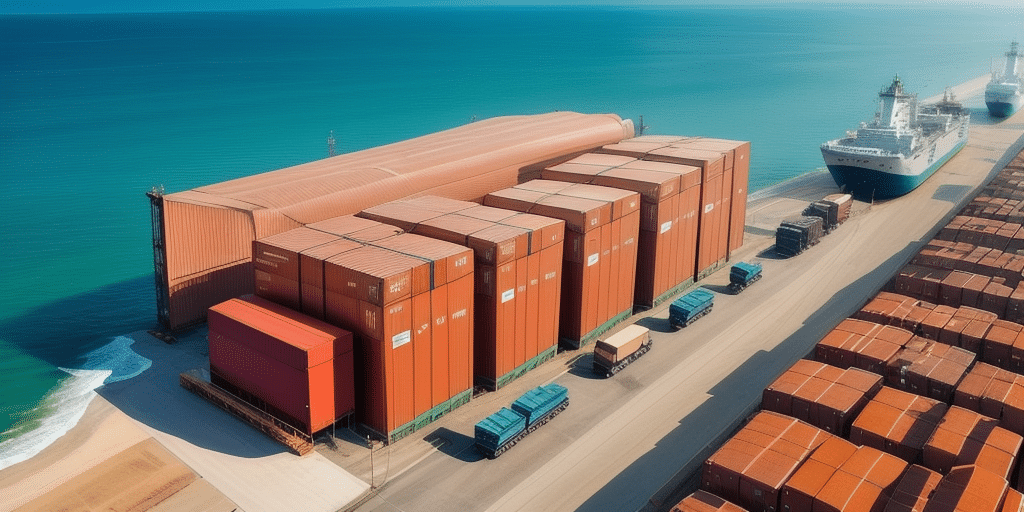Optimizing Your Shipping Process with UPS WorldShip
UPS WorldShip is a robust logistics platform designed to help businesses manage their shipments efficiently and streamline their shipping operations. One of its critical features is the ability to declare the value of your shipments, ensuring the protection of your goods and providing peace of mind to your customers. This comprehensive guide delves into everything you need to know about declaring value with UPS WorldShip, including its importance, how to access and use the feature, and best practices for optimal results. Let’s explore how you can enhance your shipping processes using UPS WorldShip.
Understanding UPS WorldShip
Comprehensive Shipping Management
UPS WorldShip is a desktop software application that empowers businesses to manage their shipping processes seamlessly. It offers a wide array of features, including shipment tracking, label generation, scheduling pickups, and more. This all-in-one solution simplifies logistics for businesses of all sizes, enabling them to handle shipping operations with ease.
Integration with Business Systems
One of the standout benefits of UPS WorldShip is its ability to integrate with various business software applications, such as accounting and inventory management systems. This integration reduces the risk of errors and delays associated with manual data entry, ensuring a smooth and efficient shipping process. Additionally, customizable reporting and analytics tools within UPS WorldShip help businesses identify trends and optimize their shipping operations over time.
Access to Diverse Shipping Options
UPS WorldShip provides access to a wide range of shipping options and services, including international shipping, freight shipping, and UPS My Choice® for home delivery. This flexibility allows businesses to expand their reach and offer versatile shipping solutions to their customers without the need to manage multiple shipping accounts or platforms.
The Importance of Declaring Value
Financial Protection
Declaring the value of your shipment is crucial for financial protection. It ensures that you have adequate insurance coverage in the event of loss, theft, or damage. According to UPS, declaring value can significantly reduce the financial risk associated with shipping high-value items [UPS WorldShip Support].
Legal Compliance
In many countries, declaring the value of shipped goods is a legal requirement. Failure to comply can result in fines or other penalties. By accurately declaring shipment values, businesses ensure they adhere to international shipping regulations, avoiding potential legal complications.
Building Customer Trust
Transparency about the value of goods being shipped fosters trust with customers. When customers are assured of the accurate valuation and protection of their purchases, it enhances their confidence in your business, leading to increased loyalty and positive word-of-mouth referrals.
Types of Declared Value
Declared Value for Carriage
This is the declared value of the goods being shipped and is used by the carrier to determine the necessary insurance coverage. It typically includes the value of the goods along with any associated taxes, duties, or fees.
Declared Value for Customs
Used for customs purposes, this value helps customs officials assess the shipment's worth and determine the applicable duties and taxes. It may differ from the declared value for carriage as it can include additional fees related to customs clearance.
Insured Value
The insured value represents the maximum amount the carrier will pay in case of loss or damage. This value is usually based on the declared value for carriage but can vary depending on the carrier's insurance policies and the level of coverage chosen by the shipper.
Minimum Value
Some carriers require a minimum declared value to ensure they can cover handling and transportation costs, even for low-value shipments. This policy helps carriers manage their risk and maintain service quality.
How to Declare Value in UPS WorldShip
Accessing the 'Declare Value' Feature
To declare the value of your shipment in UPS WorldShip, follow these steps:
- Open the UPS WorldShip software on your desktop.
- Navigate to the 'Ship' tab located at the top of the screen.
- Select the 'Declare Value' option from the dropdown menu on the left-hand side.
- A new window will appear, allowing you to input the declared value of your shipment and choose the appropriate options based on your needs.
Step-by-Step Guide to Declaring Value
- Enter Declared Value: Input the total value of the goods being shipped in the designated field.
- Select Value Type: Choose the appropriate type of declared value, such as declared value for carriage, customs, or both.
- Choose Insurance Coverage: Select the level of insurance coverage that aligns with the declared value and your insurance preferences.
- Review Shipment Details: Ensure all shipment details, including weight and dimensions, are accurate.
- Save Settings: Click 'OK' to save your declared value settings and proceed with the shipping process.
Best Practices for Declaring Value
Avoiding Common Mistakes
- Under-Declaration: Failing to declare the full value of the shipment can lead to insufficient insurance coverage.
- Incorrect Value Type: Selecting the wrong type of declared value may result in compliance issues or inadequate protection.
- Inaccurate Valuation: Overestimating or underestimating the shipment value can affect insurance claims and customer trust.
- Neglecting Updates: Ensure that declared value settings are updated for each new shipment to maintain accuracy.
Accurately Calculating Shipment Value
- Market Research: Determine the current market value of your items to ensure accurate declaration.
- Include Additional Costs: Factor in taxes, duties, and shipping costs when calculating the total value.
- Consider Depreciation: Account for any depreciation or wear-and-tear that may affect the item's current value.
- Monitor External Factors: Stay informed about changes in exchange rates, tariffs, and other factors that can impact the value of your goods.
Benefits of Declaring Value with UPS WorldShip
- Enhanced Protection: Provides accurate insurance coverage against loss, theft, or damage.
- Legal Compliance: Ensures adherence to international shipping regulations and avoids potential fines.
- Risk Mitigation: Minimizes financial risks and complications related to customs and tariffs.
- Customer Confidence: Builds trust by transparently communicating the value of shipped goods.
Printing and Tracking Shipments with Declared Value
Printing Shipping Labels
Once the declared value is set, printing a shipping label is straightforward. After declaring the value and completing all shipment details, click the 'Ship' button to generate and print your shipping label, which will clearly display the declared value.
Tracking Your Shipment
Tracking your shipment ensures you stay informed about its progress and provide accurate updates to your customers. In UPS WorldShip, navigate to the 'Track and Confirm' option under the 'Ship' tab. Enter your tracking number to view detailed tracking information, including current and past locations, and estimated delivery times.
Frequently Asked Questions
- Do I have to declare value for every shipment?
No, declaring value is not mandatory for every shipment. However, it is highly recommended, especially for high-value items, to ensure adequate insurance coverage and protection.
- What factors should I consider when choosing the level of insurance coverage?
Consider the declared value of the goods, the carrier’s insurance policies, the shipment’s risk factors, and any specific coverage needs based on the item's nature and value.
- Can I change the declared value settings after the shipment has been sent?
No, once the shipment has been sent, the declared value settings cannot be altered. It is crucial to verify all details before finalizing the shipment.
- What should I do if the declared value settings are incorrect?
If you discover an error in the declared value settings, contact your carrier immediately to rectify the information and ensure your shipment remains adequately insured.
Conclusion
Declaring the value of your shipments in UPS WorldShip is an essential practice that safeguards your goods and enhances your shipping operations. By accurately declaring shipment values, you ensure proper insurance coverage, comply with legal requirements, and build trust with your customers. Implementing the steps and best practices outlined in this guide will help you optimize your shipping processes, minimize risks, and achieve greater efficiency in your logistics operations.






















